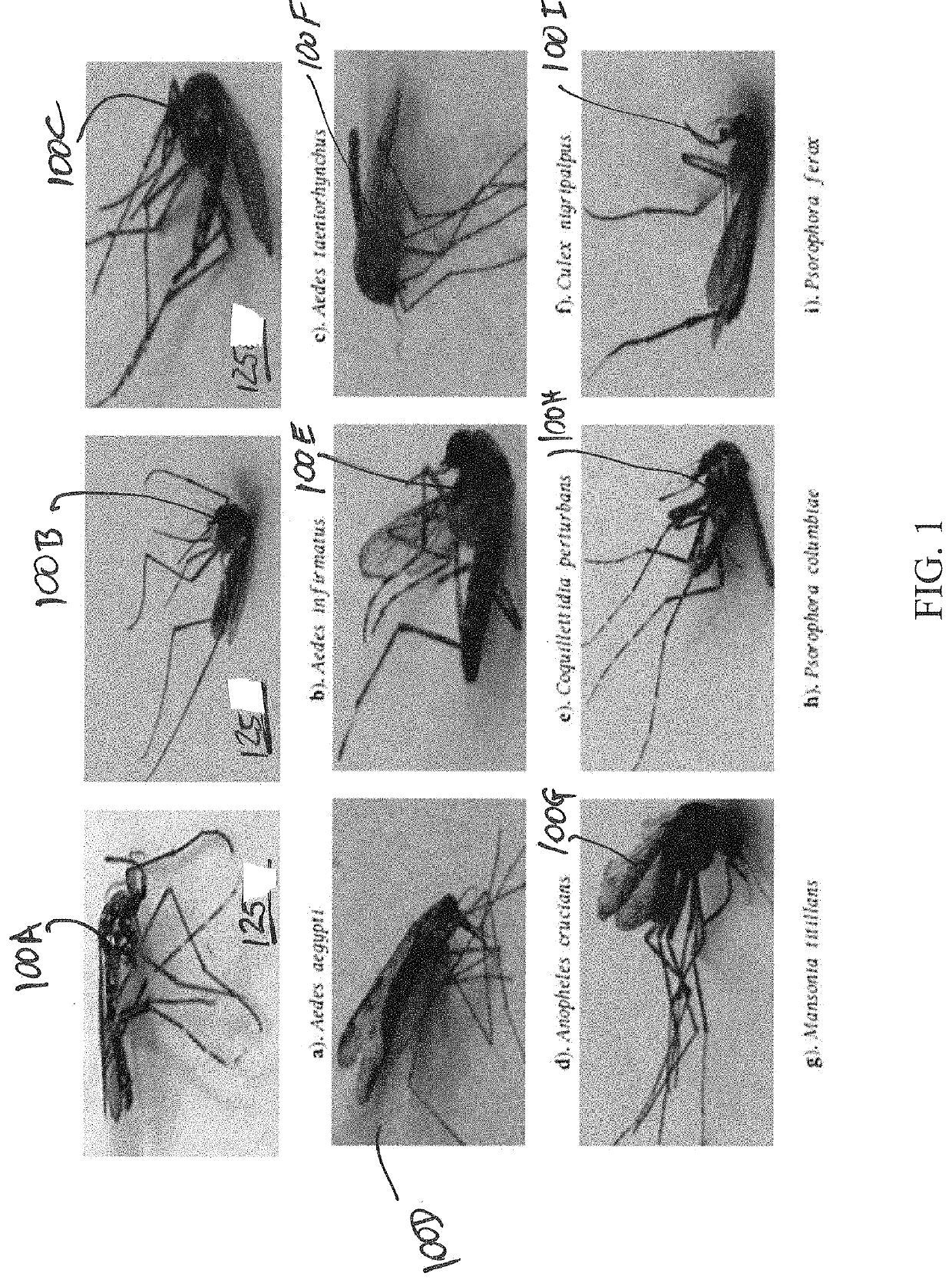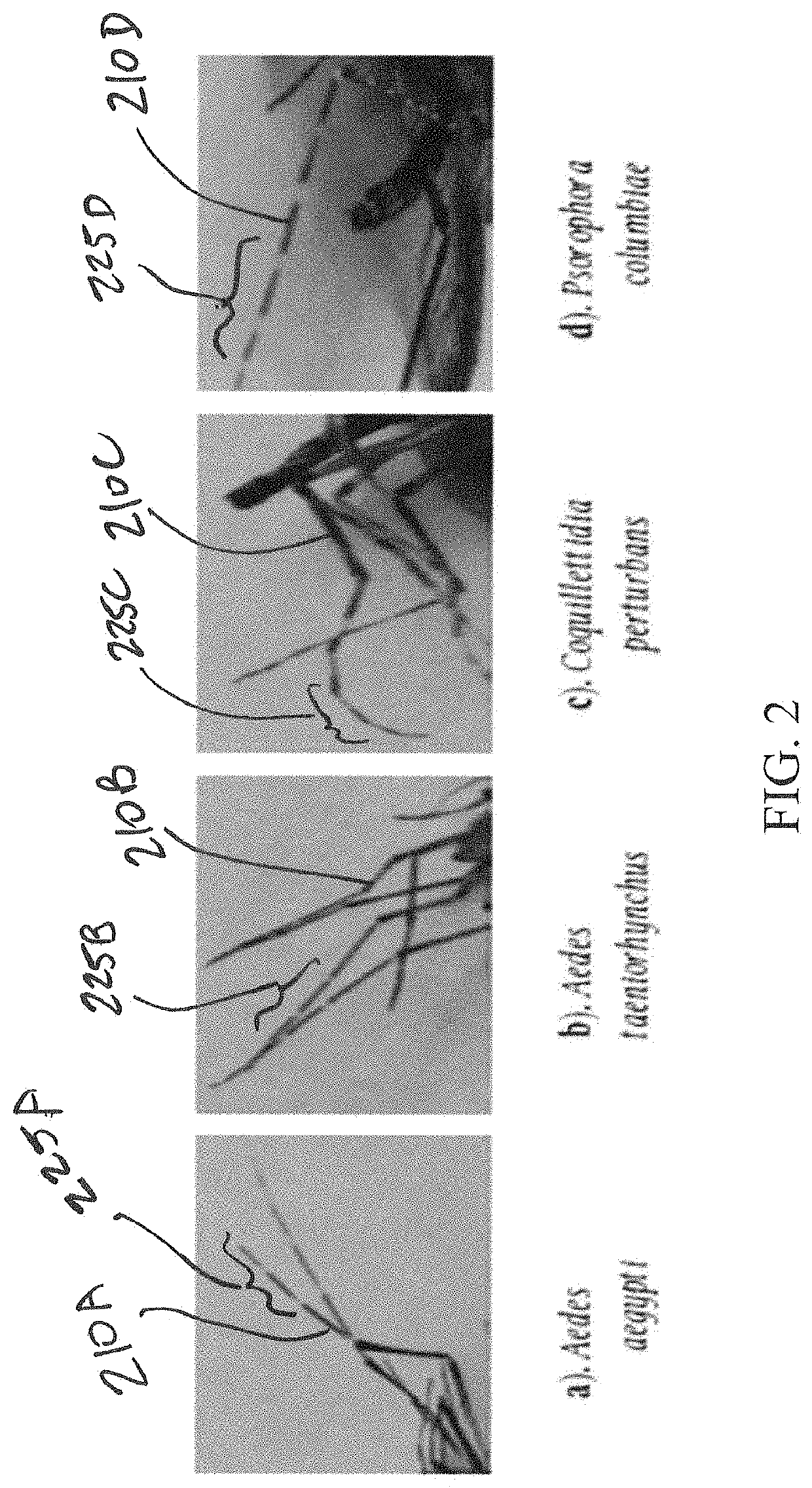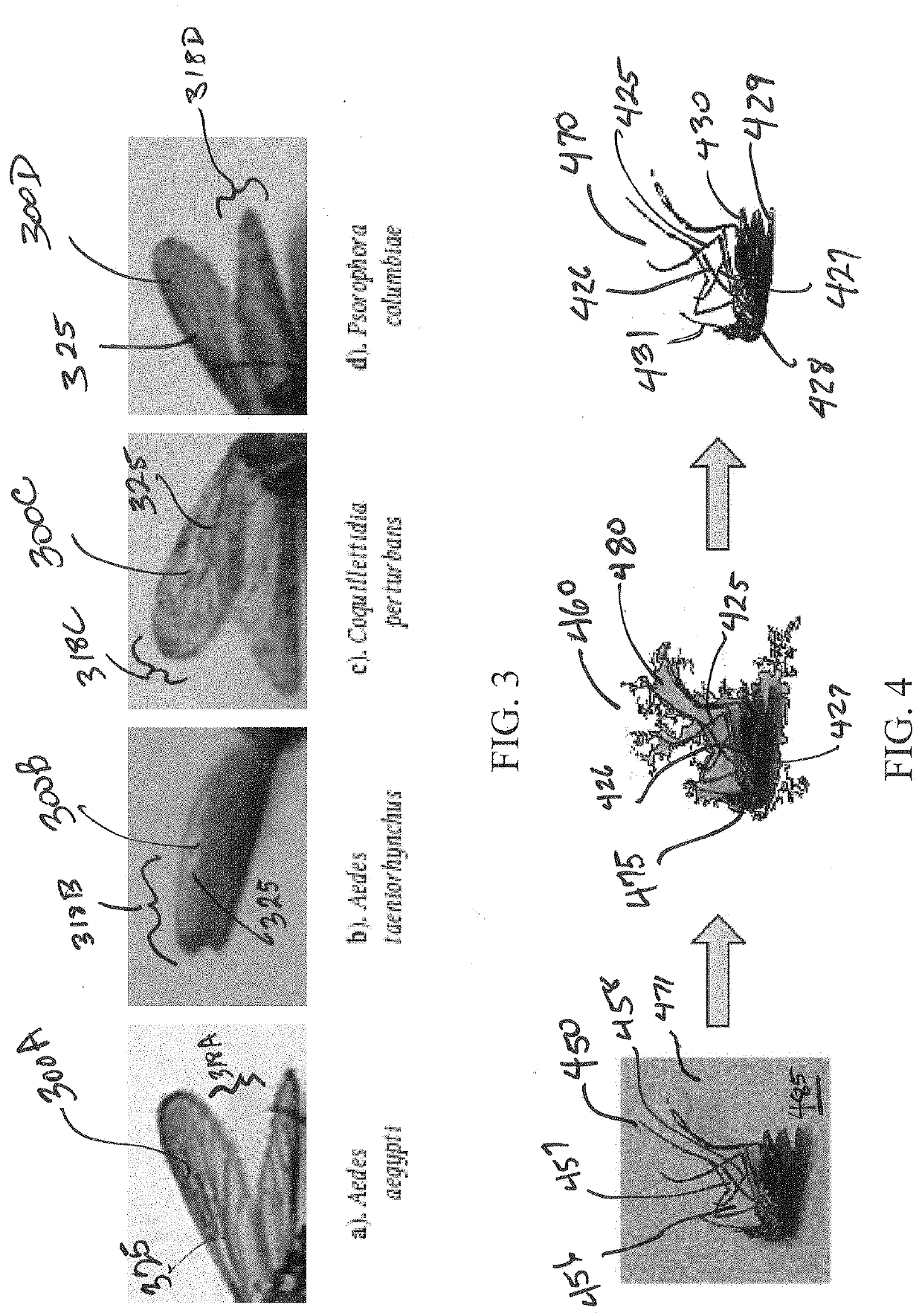Leveraging smart-phone cameras and image processing techniques to classify mosquito genus and species
a technology of image processing and smart phones, applied in character and pattern recognition, instruments, computing, etc., can solve the problems of high cost of mosquito control facilities, difficult process of genus and species identification, cognitive demands,
- Summary
- Abstract
- Description
- Claims
- Application Information
AI Technical Summary
Benefits of technology
Problems solved by technology
Method used
Image
Examples
Embodiment Construction
[0027]In some aspects, the present disclosure relates to computerized apparatuses, computer implemented methods, and computerized systems that use digital image analysis to identify species of insect specimens, such as, but not limited to mosquitos. The disclosure presents a system wherein a user (expert or an ordinary citizen) takes a photo of a mosquito using a smart-phone, and then the image is immediately sent to a central server along with GPS of the smart-phone. The server will implement algorithms described in this disclosure to a) identify the genus of the mosquito; b) identify the species of the mosquito; c) separate the body parts of the image into objects of interest like wings, legs, proboscis, abdomen, scutum etc.; d) give feedback on species and genus back to user, along with info as to what diseases the species carry, and more interesting information like flight range etc. Potential uses are in mosquito identification, since it is a painful / cognitively demanding probl...
PUM
 Login to View More
Login to View More Abstract
Description
Claims
Application Information
 Login to View More
Login to View More - R&D
- Intellectual Property
- Life Sciences
- Materials
- Tech Scout
- Unparalleled Data Quality
- Higher Quality Content
- 60% Fewer Hallucinations
Browse by: Latest US Patents, China's latest patents, Technical Efficacy Thesaurus, Application Domain, Technology Topic, Popular Technical Reports.
© 2025 PatSnap. All rights reserved.Legal|Privacy policy|Modern Slavery Act Transparency Statement|Sitemap|About US| Contact US: help@patsnap.com



